Every year, one or two European cities receive the title of European Capital of Culture. In 2018, that title went to the city of Leeuwarden in the Netherlands. Leeuwarden is located in the northern part of the Netherlands, in the region of Friesland. That region is mostly known abroad for its water activities, but it has so much more to offer.
To make people aware of this, the city invited me along with a few other Belgian bloggers to come and have a look – or better, a taste. In just a little over 24 hours, we visited 8 food hot spots in the city and the wider region that all focus on making, selling, or preparing local products. Here they are.
8 local food hot spots in and around Leeuwarden
1. Dutch bistro food at Grand-Café De Walrus
Grand-Café De Walrus has a big terrace in front of its entrance on the Gouverneursplein where we had lunch upon arriving in Leeuwarden. It serves bistro food with a typical Dutch twist. We enjoyed a three-part lunch combination, consisting of a small soup, bread with pulled pork, and a “sandwich croquette”, something the Dutch are known for.
There are ample other choices on the menu and De Walrus also has a few starters, main courses, and desserts that change on a weekly basis so that no matter how often you return, you always get to try something new.
Grand-Café De Walrus
Gouverneursplein 37
Leeuwarden
+31 58 213 7740
2. 150+ years of history at distillery Weduwe Joustra
We needed that filling lunch, because our next stop was of the more alcoholic kind. We drove to Weduwe Joustra (“Widow Joustra”) in the town of Sneek. This distillery has been run by the same family for six generations now and still operates from the same building where it was once founded.
Upon entering the narrow house, you can hardly imagine that the most famous liquor of Friesland is prepared here: the Beerenburg. Beerenburg is a drink that was created out of necessity by the widow of a wine importer. Here’s how the story goes:
Stephen Joustra was a man who loved French wines and imported them into the Netherlands for his own enjoyment. Because of the peat used as part of the isolation in his basement, the wines he let age there gained a stupendous taste. Stephen decided to start selling his wines and quickly became successful. Unfortunately, he died a year after having started his business, leaving his wife Anjenette behind with four young kids.
Anjenette or “the Widow Joustra” realized she needed to start earning money now and on one of her trips to Amsterdam, she found a way to do just that. In Amsterdam, there was a man who sold herbs he claimed to be medicinal to the passing shipmen. The shipmen added the herbs to barrels filled with alcohol and drank that “medicine” three times a day to prevent seasickness and other discomforts.
“I can do that too”, the Widow Joustra thought, and so she asked the shipmen to bring her packages of herbs from Amsterdam when they passed through Sneek. They agreed and soon the Beerenburg drink was born.
What’s a bit funny is that the drink that the people from Friesland are so proud of as being their drink, is actually named after a vendor from Amsterdam. Beerenburg was the name of the man who owned the herbs shop and so the shipmen referred to his herbs as “Beerenburg herbs”, which lead the Widow Joustra to call her drink Beerenburg.
We learned this and more while we sat in the attic/museum/tasting room of Widow Joustra before we made our way to the distillery where we could see how Beerenburg and the other liquors of the house are made.
The original Beerenburg drink is still made according to the same recipe that Widow Joustra created over 150 years ago, with the same combination of herbs that she bought from Beerenburg, but the house has expanded its offer since with a range of both sweeter and stronger drinks. What all these versions have in common is that they’re all made from purely natural ingredients. It’s all just dried herbs and alcohol.
2018 is a special year for Widow Joustra as well, as the company was asked to create the official “European Capital of Culture 2018” drink. It’s called “Frysk” and it’s already for sale in stores.
Speaking of stores, it’s good to know that Widow Joustra doesn’t export its products abroad. You can only buy Beerenburg and other Widow Joustra drinks in the Netherlands. I think that’s reason enough to visit, wouldn’t you say? :-)
Now, those of you who know me might wonder why I’ve just told you so much about a company that produces alcohol while I rarely drink alcohol. Well, you’ll see if you go there yourself. The lady who gave us a tour was just so full of passion about the history of Widow Joustra, the way the company works, and the things they still have planned for the future that it’s impossible not to be interested. Besides, it’s not because I don’t drink that the process behind the product doesn’t interest me.
I even had a sip of their Beerenburg (way too strong for me) and two of their sweetest liquors, one with toffee and one with chocolate. I actually really liked the chocolate one and wouldn’t have minded a bit of it on a vanilla ice cream :D
If you want to visit Weduwe Joustra as well, it’s best to call ahead as tours are only given on demand.
Weduwe Joustra
Kleinzand 32
Sneek
+31 515 412 912
3. Biological flower making at mill ‘t Lam
If you think 150+ years of history is impressive, wait until you read about smock mill ‘t Lam (“The Lam”) in Woudsend. The first records of this mill date back to the 17th century, when it was built as a replacement for an older mill. While it was in disuse for a while, it’s fully operational again now.
The mill processes grain and barley coming exclusively from the Netherlands. It’s the only mill in the region certified as “biological” and it sells its products both to bakers and stores, and directly to customers in its own store.
The mill’s store lies right next to the mill itself and is located in what used to be the miller’s home. Alongside its own products, it also sells other local foods.
You need to call ahead to get a tour from miller Kees, who’ll gladly tell you all about the mill’s history and the way it works from atop the mills “terrace”. Kees runs the mill together with his wife.
‘t Lam
Molestrjitte 4
Woudsend
+31 514 591 659
4. Eal fisherman Ale de Jager
When I heard our next stop would be at an eal fisherman’s place, I expected we’d drive up to a big lake. Instead, we drove up to the driveway of what seemed a very ordinary house in a very ordinary neighborhood. As we turned the corner, though, we saw a tiny private harbor with two boats, several nets, and lots of fishing gear.
We were at the right place and Ale de Jager soon came to greet us.
Ale fishes for eal and a few other fish on a one-hectare large lake where only he can fish. The tiny harbor by his house is connected to the lake by a canal – one of many in Friesland – and so he takes his boat to work every morning like most people take their car. With the difference that he gets up way earlier than most other people do.
Ale is one of the few remaining professional fishermen in Friesland and an impersonation of modesty. Not only does he catch and sell fish, he also smokes and prepares them in the most delicious way. We got a look into his smoking cabin and got to try some of the eel and salmon he’d prepared. It was a feast for our taste buds.
When he’s not out catching fish, Ale takes visitors with him to the lake on his boat showing them the nets and telling them all about the way he works and the fishing industry in Friesland. He runs tours all year long. You just need to call ahead to book one.
Fiskerij Bedriuw de Jager
Oan it Swin 9
Reduzum
+31 6 23690581
5. Restaurant By Ús
Our last food stop of the day was at restaurant By Ús which means as much as “At our place”. It’s the best place for indecisive people like me, as they only have one set menu per evening. The only thing you need to choose is how many courses you’d like to have.
By Ús works like this because it allows them to only use the freshest ingredients and not waste anything. It also means that they can easily adapt the menu to the season and the products that are locally on offer during the current time of the year.
Before I tell you more about the food, I need to tell you about the ambiance at By Ús. It was exactly what I needed at that point in the day. I hadn’t slept well the three nights prior and was pretty beat at the end of the day.
Sitting at By Ús, though, I felt myself sinking into a state of relaxation. My headache vanished (okay, some medication may have helped with that), my muscles relaxed and my energy levels rose with every course.
We had five-and-a-half courses, the maximum for the menu of that evening. These followed only after we’d enjoyed a few delicious amuses-bouche. Here’s all we had:
- biscuit of corn flour with corn, lentils, lemon and piri piri
- toast with tomato, pea, mozzarella and black olive
- buiscuit of rye bread with soubise, honey, summer truffle
- Gado Gado, an Indonesian soup
- bread with unsalted butter and beurre noisette
Those were just the amuses-bouche.
The actual courses were:
- macrel with kimchi of water melon, caramelized tomato, sorbet of avocado, pesto of rucola, basil oil, salad, and fregula
- mousse of horseradish with foie gras powder, small beets, aceite balsamico, and cherries
- plaice and herring roe with foam of spinach, fried potato, Mona Lisa potato, chantarelles, caramelized lemon peel, and garden beans
- mussels with baked salad, cream of salad and curry, curry biscuits, fennel, lime leaf oil, and a broth of barbecued red onion with star anise
- steak with fresh and pickled pickle, gyoza with aubergine, paksoy, sweet-and-sour carrot, and green pimento sauce
- passion fruit pie with raspberries, gooseberries, an emulsion of honey, whipped cream, and raspberry sorbet
Are you drooling yet?
All of these courses were served at a perfect pace by a smiling face explaining what they all were. While our part of the restaurant was full, the tables were set as such that you never heard other people talking and could really enjoy your dinner as if it was just your table there.
If you ever go to Leeuwarden – and I hope you will – I can highly recommend By Ús for dinner.
Restaurant By Ús
Over de Kelders 24
Leeuwarden
+31 58 215 8663
6. Sheep farm Groot Kabel
After a good night’s sleep, we got to meet two remarkable people. After a fire struck their farm in 2007, Wieger and Dineke didn’t give up. Instead, they saw an opportunity to specialize and now they run a completely biological sheep farm that produces delicious sheep cheese.
Now, before you pull a face: I know some people don’t like goat cheese and think that sheep cheese tastes the same. It doesn’t. When we got to taste a few of the cheeses Groot Kabel produces, I was surprised by their soft flavor.
But back to my explanation.
Wieger and Dineke use all the milk their sheep produce themselves to make cheese. None of the mild is sold, none of it goes to waste. They do have a small store where visitors can buy their cheeses, but most of the end product goes to wholesale stores.
The farm uses solar panels for electricity, gathers rain water for the sheep and filters all of its waste water. They use the sheeps’ waste as fertilizer for the land and are currently growing their own beets to feed the sheep. They’re trying to create a full circle and while they’re not entirely there yet, they’re close.
While Dineke gave us a little tour, she told us about the keeping of sheep, what the milking process is like and how they produce their cheeses. We got to walk through the stable and from their small store we could look into the cheese factory from behind a glass wall.
Wieger and Dineke are just another example of how passionate the local producers in Friesland are about what they do. If you’d like to meet them as well, you can call them to book a tour or visit their little shop. And if you can’t fit in a visit, be sure to keep an eye out for “Groot Kabel Schapenkaas” when you go into a food store. One of their lovely bolls of cheese makes for a great souvenir.
Groot Kabel
Foijingaweg 57
Kollumerpomp
+31 511 408 817
7. Botanical Garden De Kruidhof
From cheese to herbs at the Botanical Garden De Kruidhof (“The Herbs Garden”) in Buitenpost. This botanical garden has no less than 2,000 different plant species that you can admire in its 17 thematic gardens spread out over more than 3.5 hectares.
A bit of information about the gardens you can find at De Kruidhof:
- the medicinal herbs garden: self-explanatory
- the biblical plants collection: plants that play an important role in Christan symbolism
- Berenburgborder: the known herbs used to make Berenburg (a different version of the Beerenburg we tried at Weduwe Joustra)
- the meditation garden: an intimate garden where you can sit down and think for a bit
- the forest garden: like walking through the woods!
- the fern garden: self-explanatory
- the music garden: a garden that combines species, colors and scents to create “natural music”
- the garden of kitchen herbs: self-explanatory
- the garden of paint plants: filled with plants that used to be used to create paint
- the rosarium: a rose garden
- the fruit garden: self-explanatory
- the garden of old crops: filled with foods that aren’t as popular anymore as they used to be
- the Friesland garden: the biodiversity of Friesland represented
- the butterfly garden: full of “butterfly-friendly” plants
- the prehistorical garden: replica of a prehistorical hunters settlement, used for workshops
- the farmer’s garden: plants that could typically be found in the garden of a local farmer
- the medieval convent garden: an exact replica of how Charles The Great had ordained convents to built and plant their herb gardens
Aside from the thematical gardens, there’s also a playground, a store, a labyrinth, a museum, and a cafe at De Kruidhof. We visited the latter for lunch.
In the shade of a large umbrella, we enjoyed a platter full of little jars containing pestos and other spreads made from herbs and plants in De Kruidhof. These platters are available daily and look different every time, depending on what the cheff pulled out of the garden that morning.
Botanical Garden De Kruithof
Schoolstraat 29b
Buitenpost
+31 511 541 253
8. Food tour around Leeuwarden
To end our two days in and around Leeuwarden, we drove back to the city for a food tour in the Kleine Kerkstraat and the Nieuwe Oosterstraat. Both are cozy little streets filled with stores selling local products and you could really spend an entire afternoon just eating your way from one to the other. Because of limited time and stomach size, we had to make a selection. Here’s where we went.
House of Taste
House of Taste is both a wholesaler and a store where you can buy delicacies from Friesland, but also from the rest of the world. Think special drinks, sausages, cheese, nuts, olive oil, vinegar and more. And if you’re hungry, they’ll gladly make you a sandwich-to-go.
House of Taste
Kleine Kerkstraat 36
Leeuwarden
Bakery Salverda
Bakery Salverda has a history that goes back more than 200 years. It’s known for its specialties of the region, such as “Oranjecake”, a cake with almonds, and “Dumkes”, cookies measured by the length of a thumb or “duim”.
Salverda
Kleine Kerkstraat 34 and Oostergrachtswal 109
Leeuwarden
Zuivelhoeve
The Zuivelhoeve or “Dairy Farm” is mostly known for – exactly- its cheeses, but they also sell some delicious tapenades and nut mixes.
Zuivelhoeve
Kleine Kerkstraat 23
Leeuwarden
Proef Puur
Proef Puur or “Taste Pure” is a fairtrade chocolade and ice cream producer and store. Being Belgian, its hard to admit, but their pralines tasted great. I’ll have to go back to try the ice cream, though.
Proef Puur
Kleine Kerkstraat 7
Leeuwarden
Bakery De Broadtsje
Bakery De Broadtsje makes a mean Fries sugarbread, a specialty from the province. They also have a bunch of other Fries delicacies on offer, such as cakes, cookies and special rye bread.
De Broadtsje Bakkerij
Kleine Kerkstraat 3
Leeuwarden
Priuw
Priuw means “to taste” and this specialty store won the title of “Funnest store of the Netherlands”. When owner Hielkje started the store, she had to work hard to get local producers to work with her. Now, someone drops by with a new product every other week or so, hoping Hielkje will want to sell what they’ve made.
She sells food, beers and souvenirs and she sells them well. A bubble of energy, she’ll gladly tell you about every item in her store and help you decide which one would make the best souvenir for you.
Priuw
Nieuwe Oosterstraat 6
Leeuwarden
Groenteman van der Meulen
Our ultimate stop was at vegetable specialty store Van der Meulen. Not expecting much at first, we were blown away by the large variety of potatoes on offer. Yes, potatoes!
When I go to the store, I just buy potatoes. I don’t mind the species and usually just get the cheapest kind. I don’t even know whether the supermarket I shop at has different options, aside from sweet potatoes and regular potatoes.
At Van der Meulen, no less than eight different kinds of potatoes were awaiting us to be tasted. He’d even had some fries prepared! Van der Meulen, who runs the store together with his wife, sells one kind of his potatoes to a nearby fish-and-chips stand who turns them into fries and again I was hurt in my Belgian pried (kidding) – these fries were amazing!
Next time I’m in Leeuwarden, I need to go and get me some fish and chips.
In regards to the other potatoes, I was surprised at how much difference I could taste between the different kinds. I’d wrongly always thought that when taters tasted differently, they’d just been prepared or cooked differently. Now I realize that probably wasn’t the case.
Groenteman van der Meulen
Nieuwe Oosterstraat 1c
Leeuwarden
I traveled to Friesland not knowing much about the region and left with an appetite for more. While visiting the places we went to, we also passed by so many that we didn’t have the time for. There’s no doubt that I’ll be back to explore more.
Where to stay in Leeuwarden
I spend one night at the centrally located Post-Plaza Hotel. As you’ve might have guessed from the name, it’s located in the old post office and has a Grand Café in what used to be the large hall. You can get food and drinks there all-day-long, enjoy DJ sessions on Friday afternoon or relax with some live singer-songwriter background music every second and fourth Sunday of the month.
In regards to my room, that was all I needed for the night. It had a big double bed, a small desk, and a bathroom with rain shower.
Check here for more info and prices
How to get to Leeuwarden
When traveling to Leeuwarden from Belgium, your two best options are car and train. To get there, I took a bus from Heverlee, where I live, to Leuven train station, where I jumped on a train to Antwerp (after having suffered a few train delays) to take the Thalys to Schiphol Airport from there, and the last train from Schiphol to Leeuwarden.
You can also take a regular InterCity train from Antwerp to Schiphol Airport, but it’ll take you almost an hour longer so make sure to take that into account if you need to be in Leeuwarden at a specific time.
Check options for train travel within Europe here
Another option is to drive. If you go that route (no pun intended), I recommend leaving your car at Parking Zaailand in Leeuwarden. It’s a big underground parking lot where your car will be safe while you explore the city.

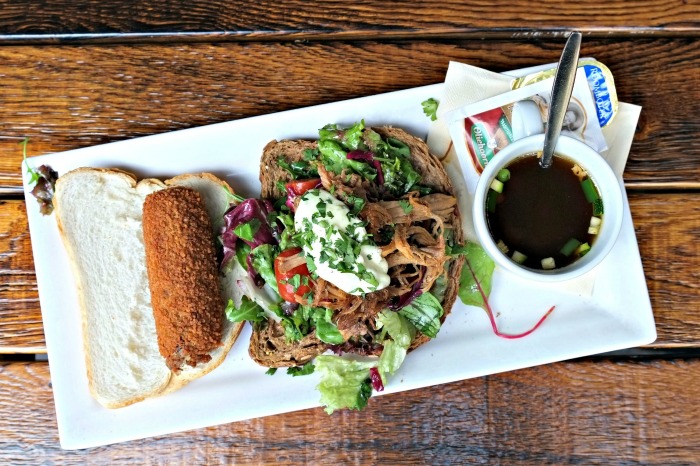
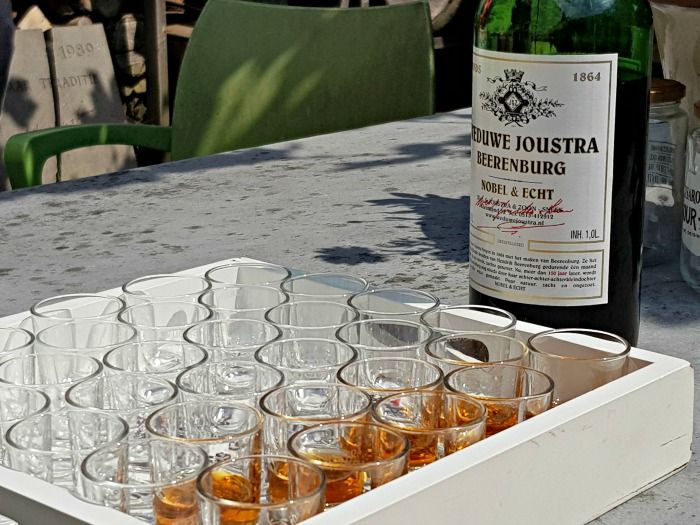
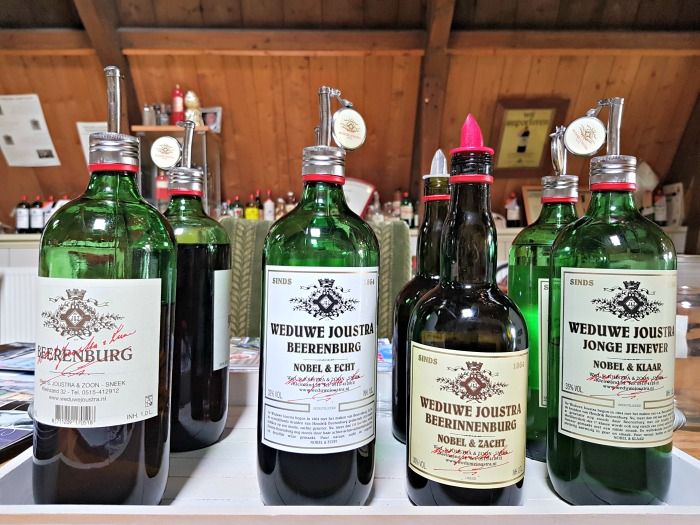
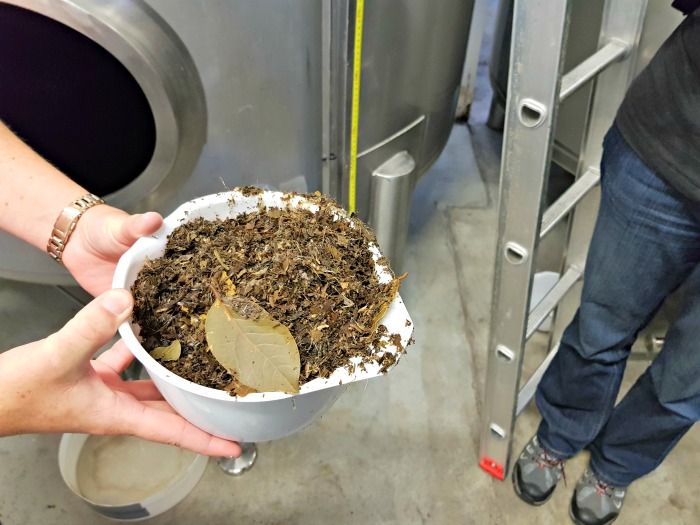
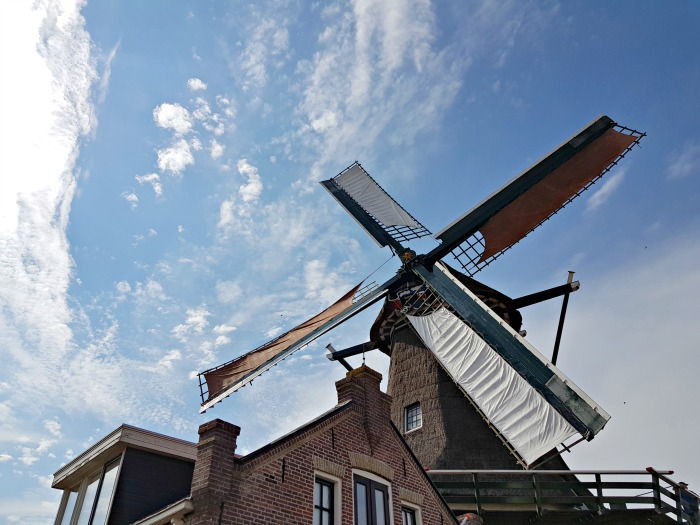
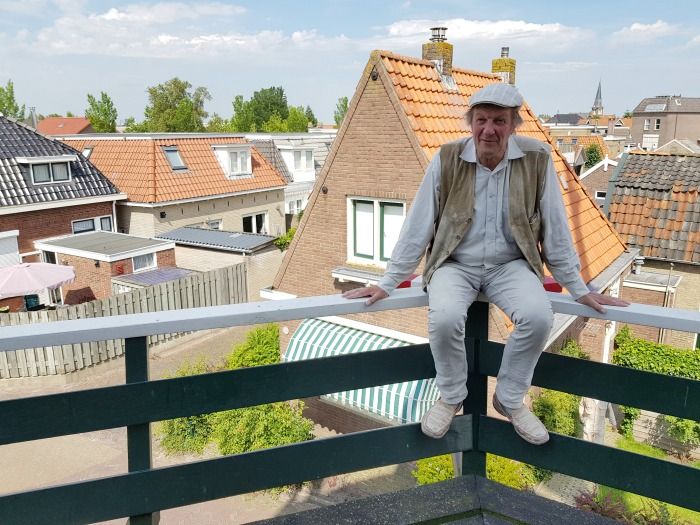
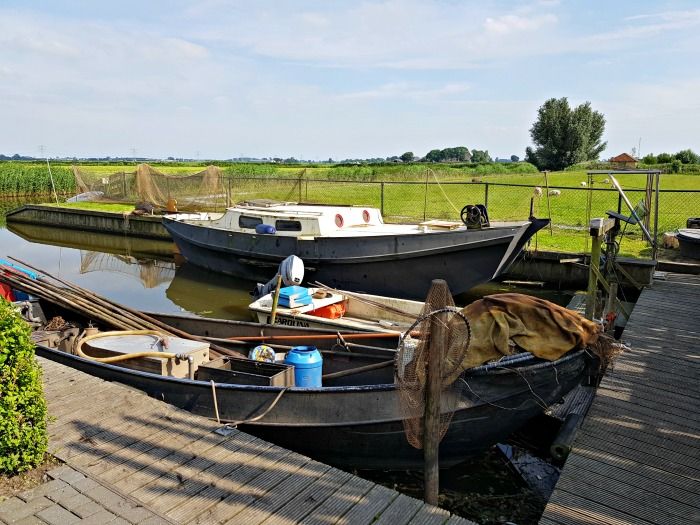
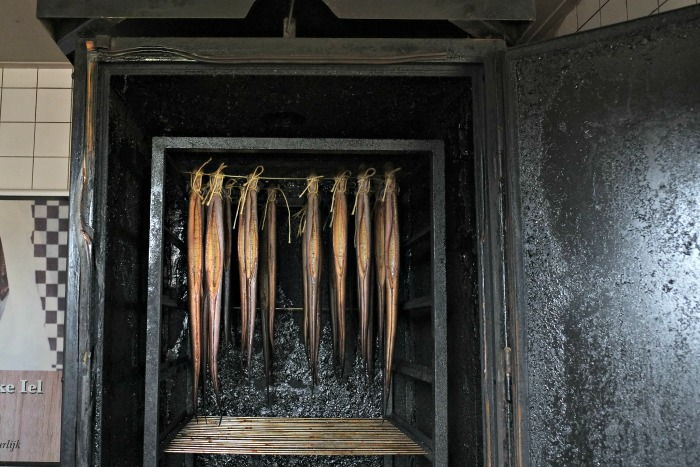
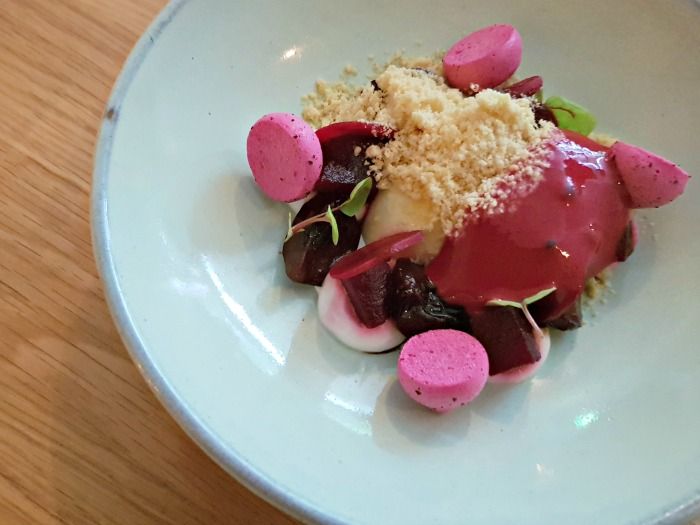
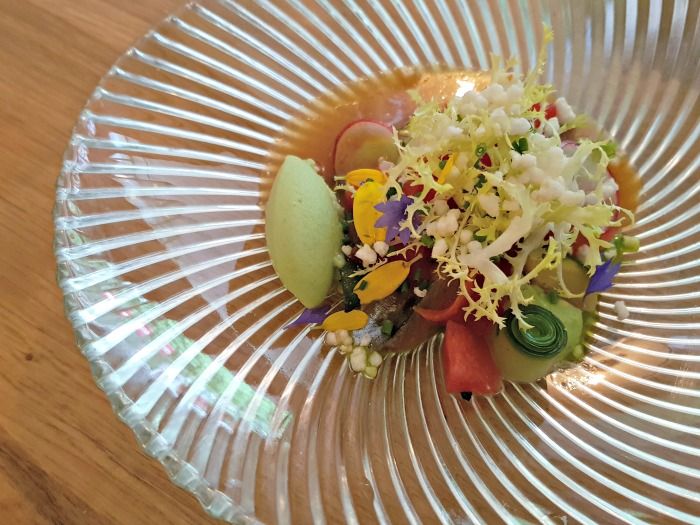
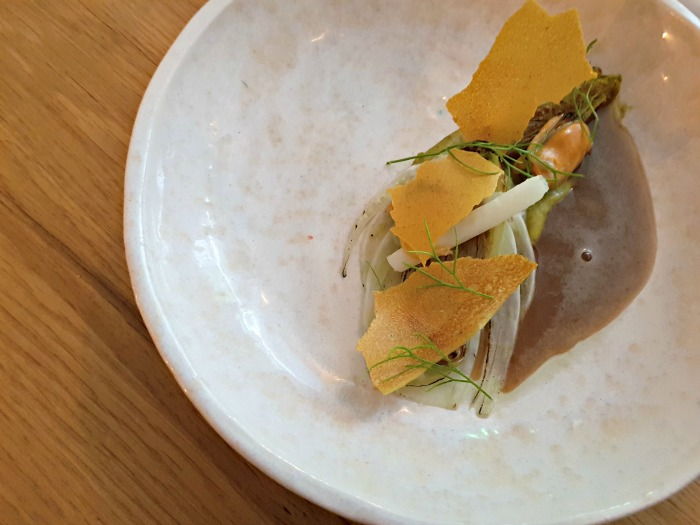
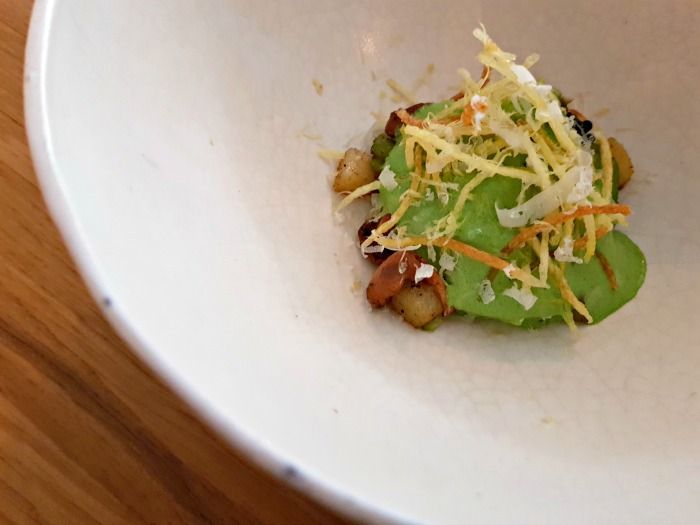
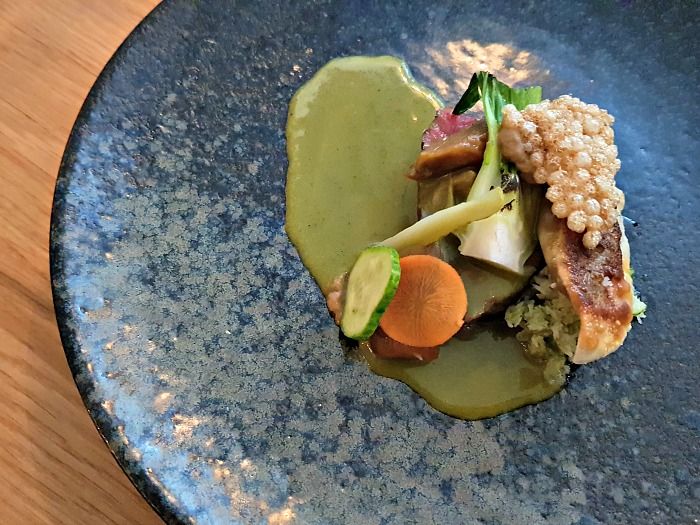
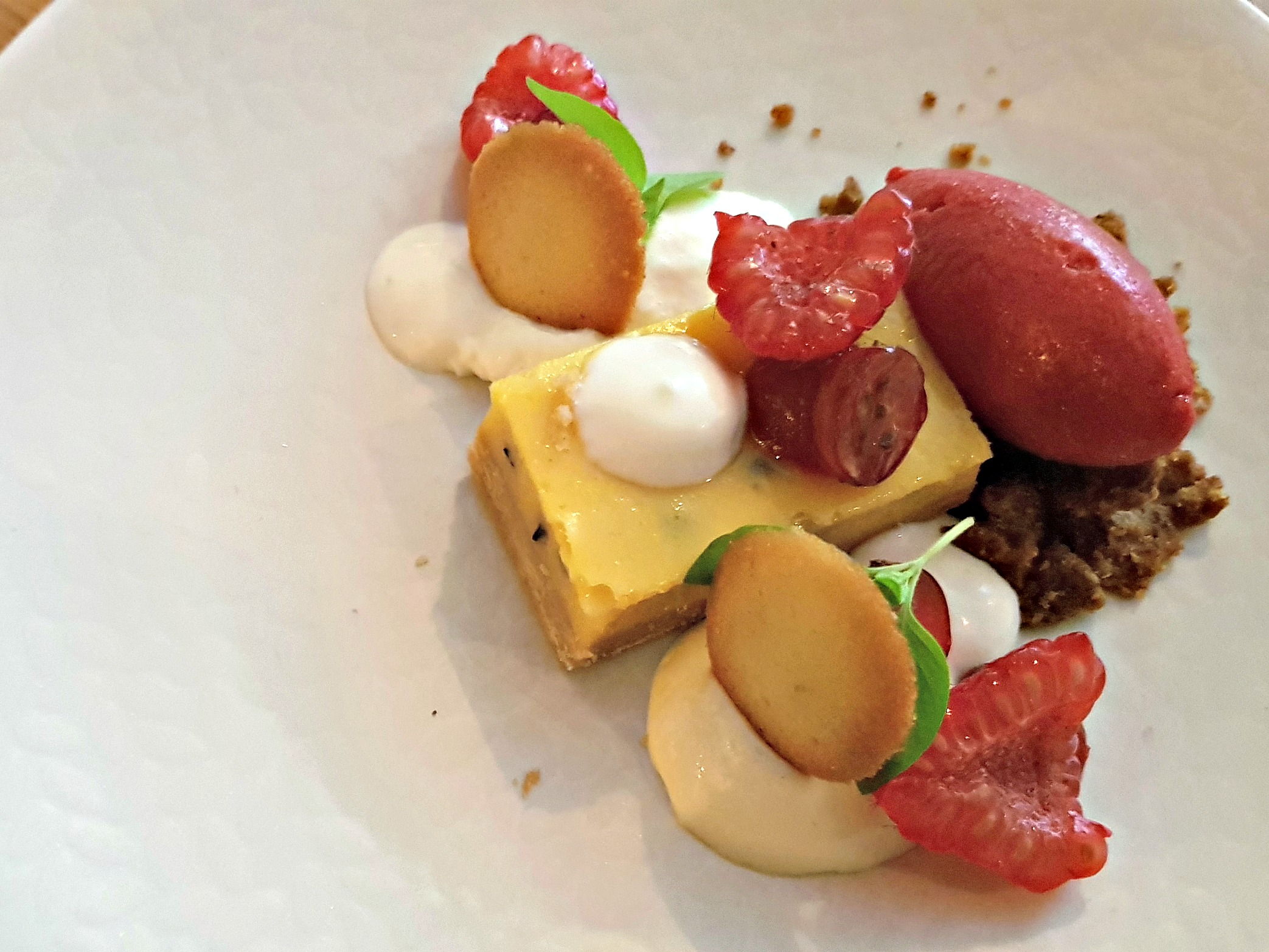
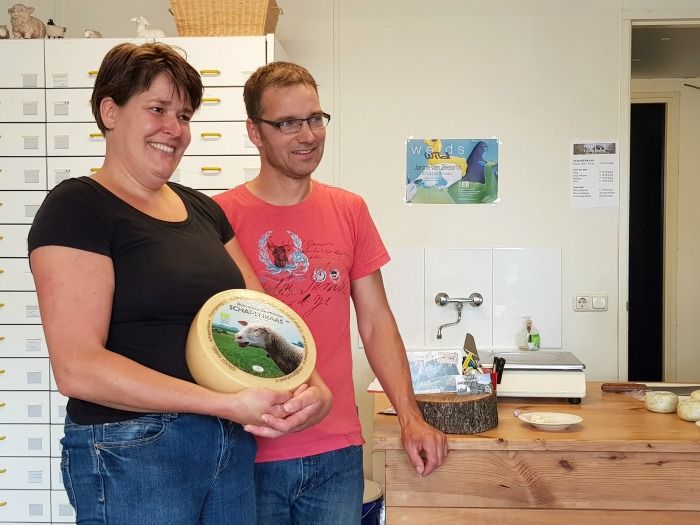
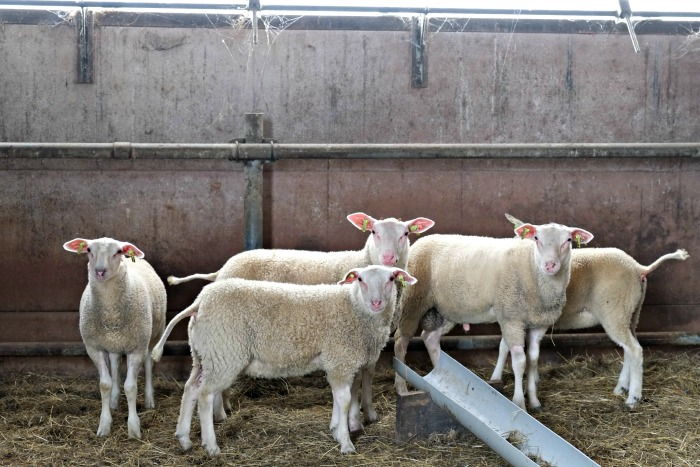
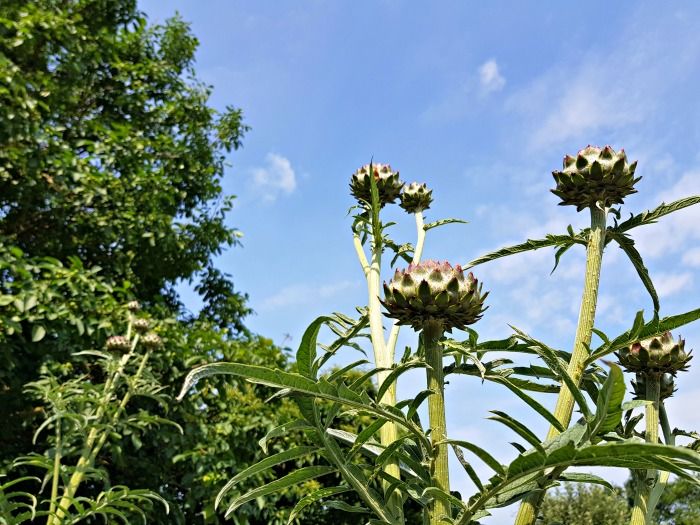
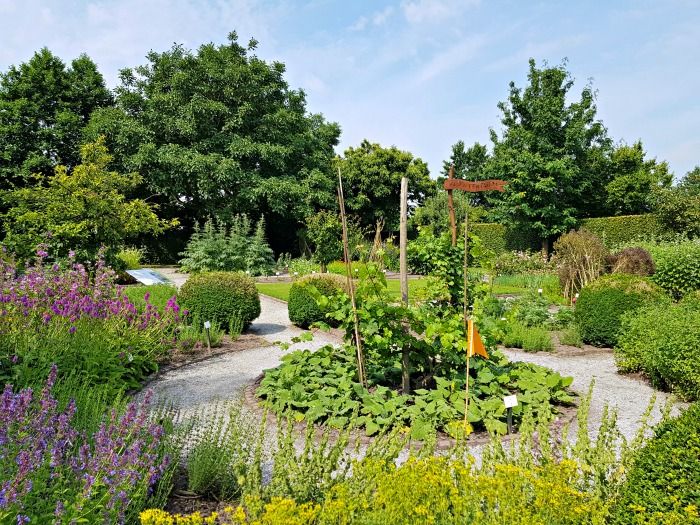
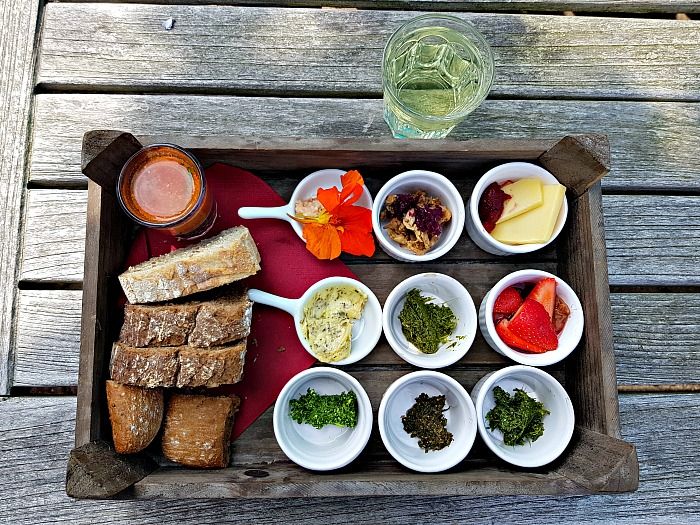
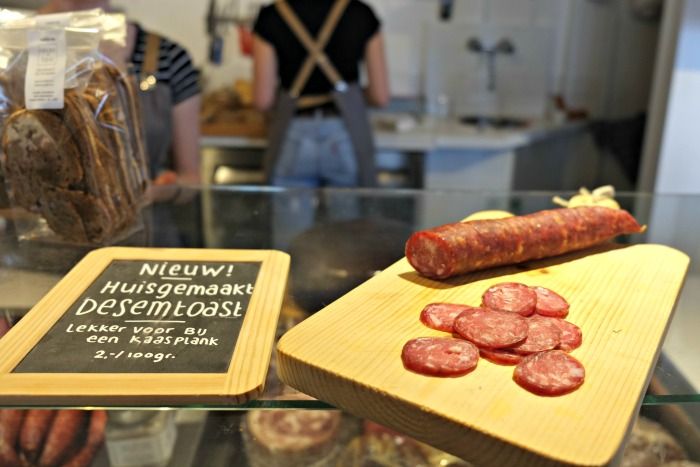
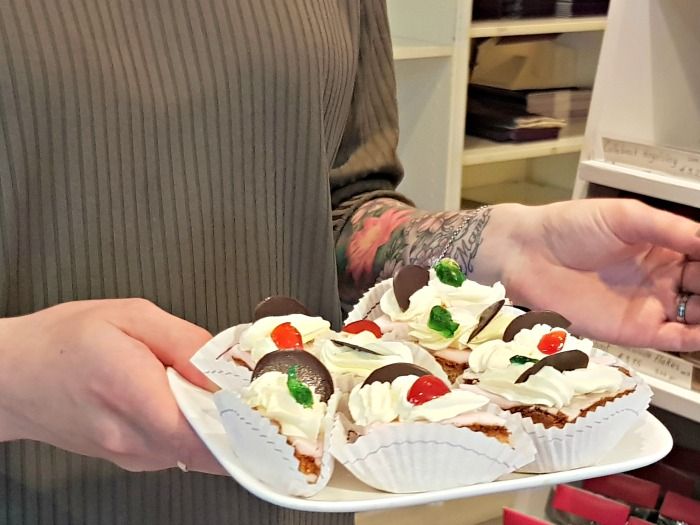
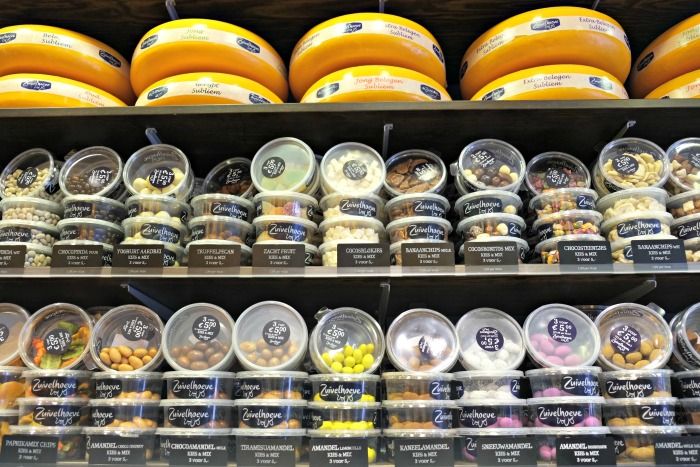
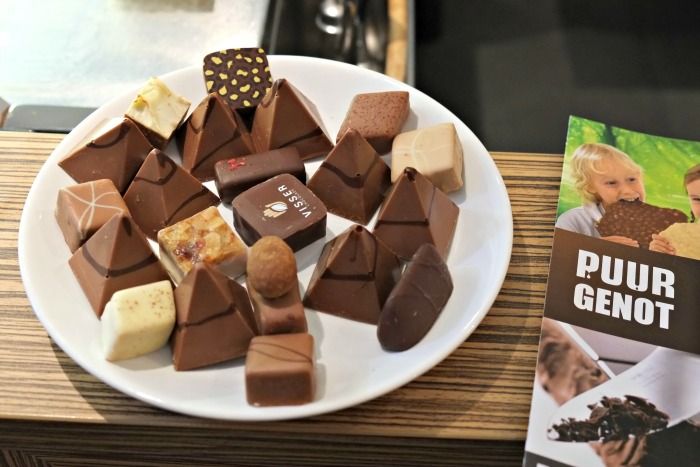
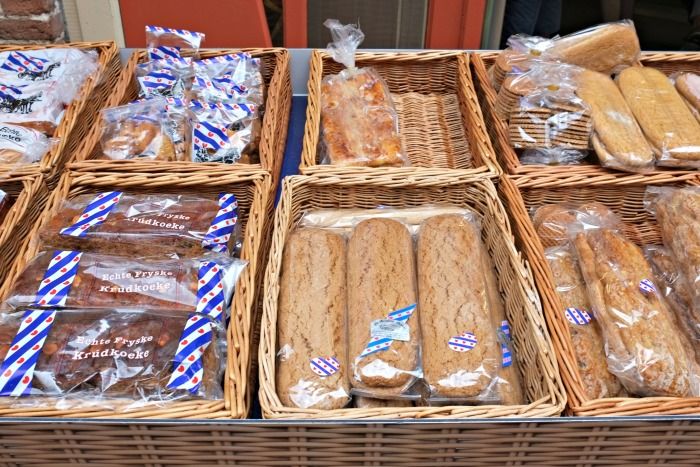

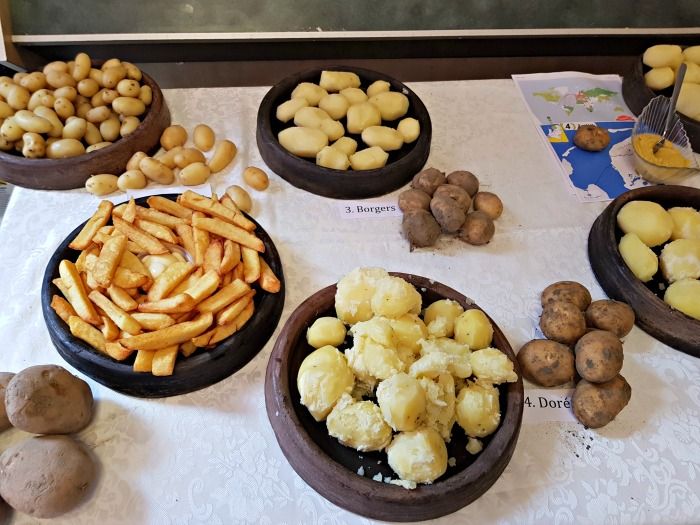
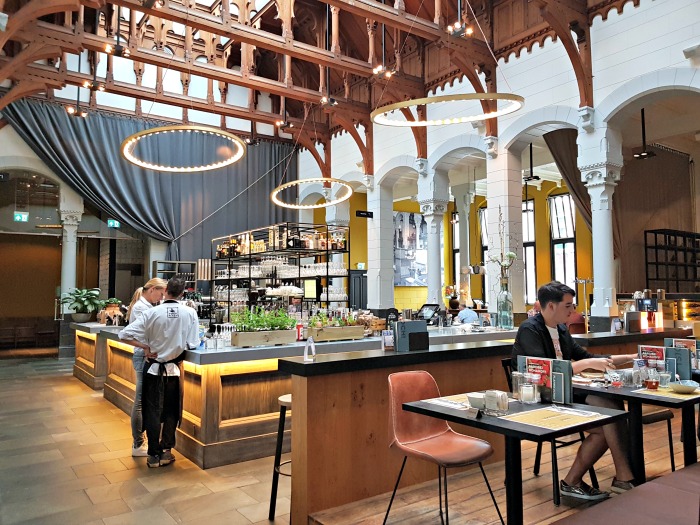
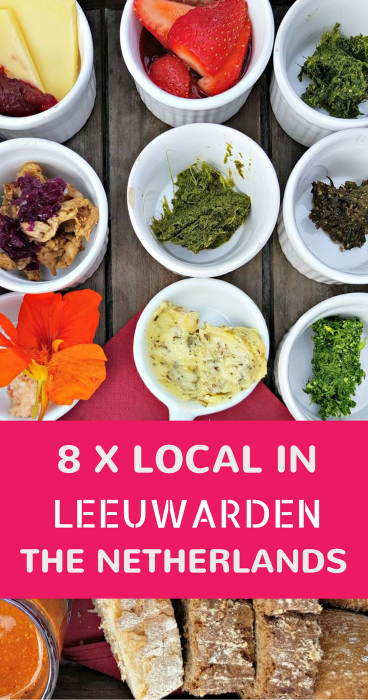
Karen Wanderlustingk says
I loved this! I was in leeuwarden recently and as a lover of Weduwe Joustra, I cannot believe that we missed the brewery tour in Sneek (although I’d cover that friesland rather than Leeuwarden itself)…but this is a great excuse to head back to Friesland soon. We stayed at the Stenden Hotel, which was perfect for those on a budget.
Sofie says
Definitely a great excuse! :)
SanPancho says
Nice sharing .local food hot spots in the European capital.
Sofie says
Thanks!